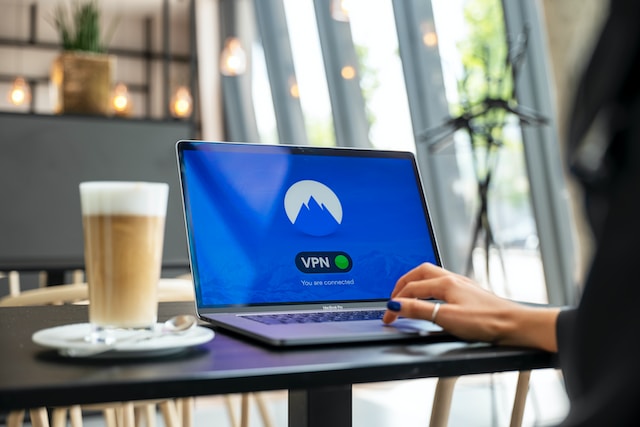
Virtual Private Networks (VPNs) use different Protocols to establish secure and encrypted connections between your device and the server, keeping your data safe and secure. Other Protocols are essential to speed or security, depending on what you’re looking for.
A VPN Protocol has good speed or security, but not necessarily both. Different Protocols have different use cases. A VPN Protocol that focuses on security. On the other hand, a VPN that focuses on speed would benefit people using VPNs individually.
In this ultimate guide to VPN protocols, we’ll go in-depth into the different VPN Protocols, their benefits and drawbacks, and how to choose the best one. So without any further ado, let’s get into it.
Types of VPN Protocols
VPN protocols are rules and technologies that help determine how data gets transmitted and encrypted between devices and the VPN server to establish a secure and encrypted connection. Here are some of the most common VPN connections that are used:
1) OpenVPN
It is an open-source VPN Protocol known for its excellent security and flexibility. It makes use of OpenSSL encryption to establish a secure point-to-point or site-to-site connection. OpenVPN is supported on various platforms, such as macOS, Windows, iOS, Android, and Linux.
It uses two standard network protocols: User Datagram Protocol (UDP), which requires fewer data verification, and Transmission Control Protocol (TCP), which requires multiple data verifications but ultimately enables stable connections.
Pros
- Since OpenVPN uses SSL Encryption, it is secure. It supports AES, which is one of the most secure encryptions.
- OpenVPN is flexible and can run on multiple operating systems.
- Since the Protocol is open-source, it can easily be adapted to different environments.
- OpenVPN is known to be reliable and robust and performs well even if there are unfavorable network conditions.
- It can bypass firewalls that block VPN protocols like PPTP.
- As an open-source protocol, it has an active community of developers and users. It helps with regular updates, improvements, and enhancing security.
Cons
- It is less user-friendly for beginners than the initial configuration requires technical knowledge.
- OpenVPN leads to higher battery consumption on mobile devices compared to other protocols.
- OpenVPN has some performance overhead due to the tunneling and encryption process.
2) IPsec (Internet Protocol Security)
It is a suite of Protocols that are used to encrypt data at the IP layer. It is used in two main modes: Transport Mode (encrypts the data payload) and Tunnel Mode (encrypts the entire IP packet). IPsec is used for remote access VPNs and site-to-site VPNs. It is a group of Protocols to secure connections between devices.
Pros
- It has excellent security features and uses cryptographic solid algorithms like AES to ensure data confidentiality.
- Major operating systems and devices support IPsec.
- You don’t need to modify software applications to work IPsec-secured connections.
- It is a stable and reliable VPN Protocol.
Cons
- It is complex compared to other VPN Protocols, especially when configuring site-to-site VPNs.
- It is more resource intensive compared to other lightweight protocols.
- It has compatibility issues with NAT (Network Address Translation).
3) L2TP/IPsec (Layer 2 Tunneling Protocol)
It is often combined with IPsec to enhance security. It’s because L2TP does not have Encryption. It uses IPsec with a 256-bit AES variant. Although L2TP/IPsec are widely supported, they come with drawbacks due to some security vulnerabilities.
Pros
- L2TP/IPsec Offers Encryption and Authentication, leading to a more secure VPN connection.
- It is helpful for Remote Access VPNs, allowing individuals to connect to the company’s network securely.
Cons
- Although IPsec provides robust security, L2TP doesn’t have Encryption. Since L2TP relies on IPsec, it would become an issue if IPsec needs to be adequately implemented.
- It is less efficient compared to other modern VPN protocols.
4) SSTP (Secure Socket Tunneling Protocol)
It is a propriety protocol developed by Microsoft. It is primarily used on Windows devices and uses SSL/TSL for Encryption. It uses SSL and TCP port 443, which enables you to bypass most Firewalls that block VPN Protocols. It is beneficial in restrictive network environments.
Pros
- It has native support on Windows operating systems.
- It is relatively easy to configure SSTP on Windows.
- SSTP performs well on Windows devices.
- Designed to operate over the standard HTTPS port (TCP port 443).
Cons
- As a propriety protocol, its code isn’t readily available for review and inspection. It raises concerns about the lack of transparency regarding any vulnerabilities.
- SSTP has limited platform support as it is primarily used for Windows.
- It isn’t open-source, which makes it utterly reliant on Microsoft for developments and updates. It can lead to slow updates and fixes.
- It has performance issues, especially compared to recent Protocols like WireGuard, especially in situations with high latency or low bandwidth.

5) IKEv2 (Internet Key Exchange Version 2)
It is used alongside IPsec to establish secure connections. It is commonly used on VPN mobile apps. If the connection with a VPN server drops unexpectedly, you will automatically reconnect. It is suitable for mobiles that constantly switch networks. You can use the Protocol with 3DES and AES for Encryption. AES is the safest method for Encryption.
Pros
- It is faster and more efficient compared to other Protocols.
- It can quickly establish VPN connections with network disruptions or device changes.
- Major operating systems like Windows, macOS, iOS, and Android support IKEv2.
- It is a default VPN protocol on mobile devices, including iOS and Android.
Cons
- It is less transparent than other VPN Protocols.
- It has limited Peer-to-Peer (P2P) support. Some VPN service providers restrict or don’t support P2P sharing activities over IKEv2 connections.
6) WireGuard
WireGuard is a recently introduced VPN protocol designed for simplicity and speed. One of its many benefits is its excellent performance while enhancing security. It is popular for its efficiency and for having a modern cryptographic approach. Wireguard uses cryptography packages like Poly1305 for data authentication and ChaCha20 for Encryption.
Pros
- It is lightweight and easy to implement.
- It has modern cryptographic algorithms that offer strong security and robust Encryption.
- It quickly establishes fast and efficient connections.
- It is available on multiple platforms.
- It has dynamic routing protocols.
- Since WireGuard is open-source, its code can be publicly inspected and audited.
Cons
- Since it is still a relatively new VPN Protocol, many organizations prefer the more established and mature one.
- It has fewer configuration options compared to feature-rich protocols.
- It may face issues in environments with firewalls that block UDP traffic or non-standard ports.
- WireGuard also has limited P2P support.
7) PPTP (Point-To-Point Tunneling Protocol)
It is one of the oldest VPN Protocols and is easy to set up. However, it is less secure than other VPN Protocols because it has weak Encryption. So if you’re looking to transmit sensitive data, there are better options than PPTP.
Pros
- It is easy to set up and configure.
- It has compatibility across many devices.
- It has a fast speed compared to many VPN Protocols.
Cons
- It has weak security due to outdated Encryption algorithms.
- Since it lacks strong authentication, it may be unable to provide secure and reliable user verification.
- Some firewalls can easily detect and block PPTP traffic.
- It has limited features compared to newer Protocols.
- Since it is prone to security vulnerabilities, many major VPN providers no longer support it. They prefer other secure protocols like IPsec or WireGuard.
Factors To Consider When Choosing The Right VPN Protocol
When choosing the suitable Protocol, here are some factors that you’ll need to consider:
Ease Of Use
If you need to be better versed in the tech world and are a beginner, use a VPN Protocol that is easy to configure and set up. PPTP and SSTP are the best options.
Security & Privacy
If security and privacy are your main priority, you must go for VPN Protocols like OpenVPN, IKEv2/IPSec, or L2TP/IPSec. For many organizations, these Protocols work best since security is their primary goal to protect their sensitive and confidential data.
Speed
If you plan to use a VPN for personal means, for example, accessing geo-restricted content, online gaming, and streaming, then PPTP is the ideal VPN protocol since it also has fast speed. So if speed is a priority, opt for a Protocol with excellent speed and robust performance.
Conclusion
You can now easily decide which VPN Protocol matches your needs and preferences better. Some prioritize speed, while others prioritize security. What you ultimately choose boils down to your own specific needs and goals.




